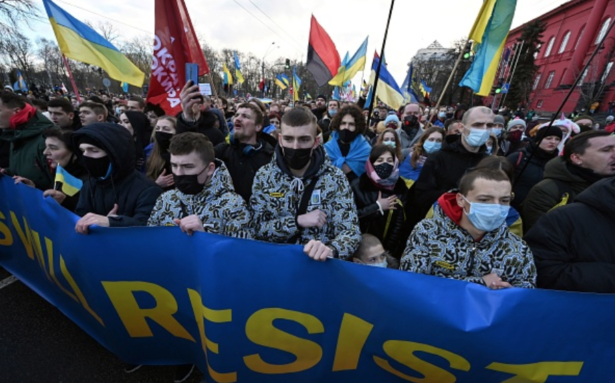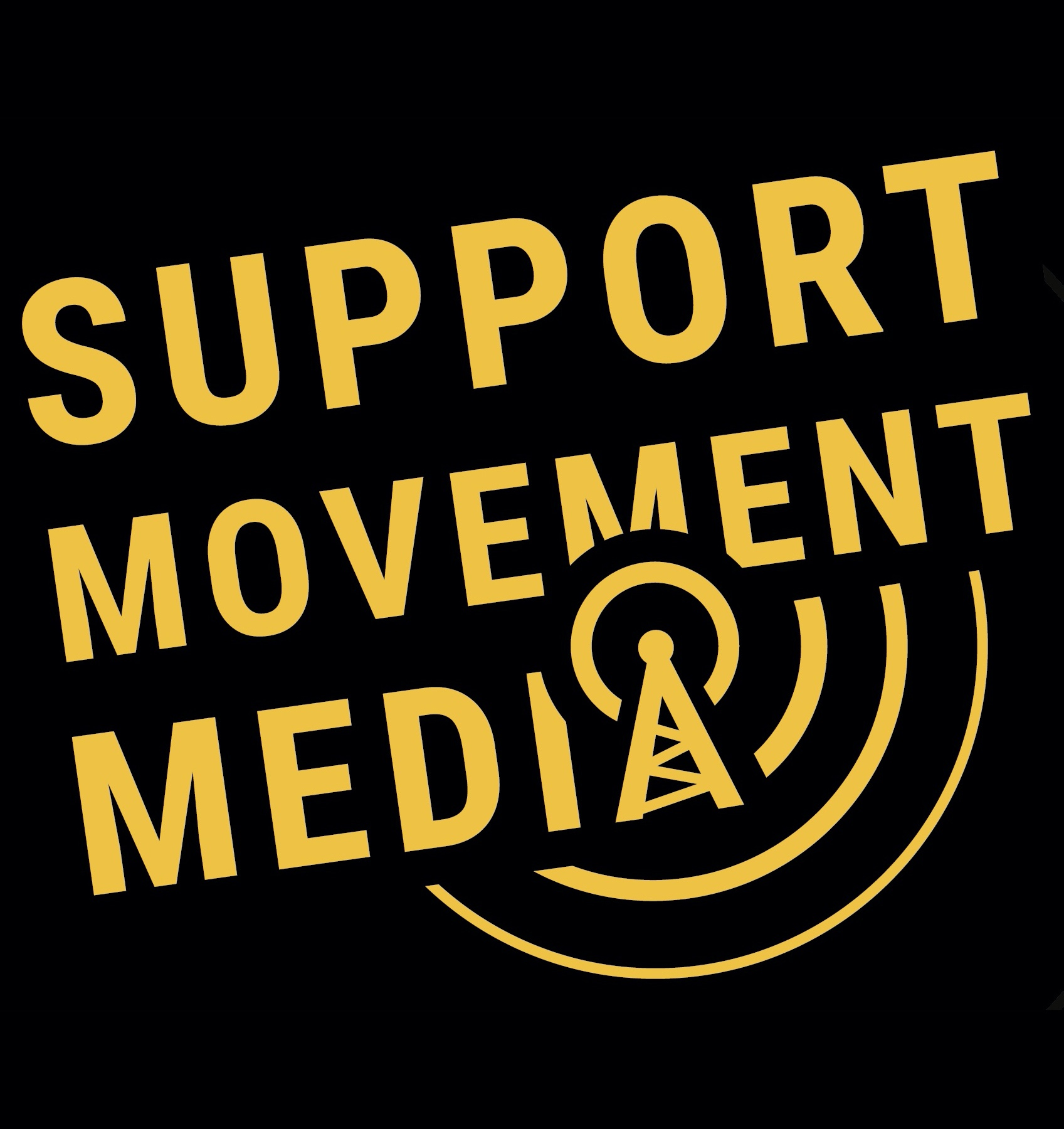One of the most popular — and dangerous — assumptions in the world is that violence keeps us safe.
I live in the United States, a country where the more guns we have, the less safe we are. That helps me to notice irrational assumptions that prevent creative thought.
The Ukrainian government’s choice to use their military to defend against Russia reminds me of the stark contrast between the choices of the Danish and Norwegian governments when faced with threat from the Nazi German war machine. Like the Ukrainian government, the Norwegian government chose to fight militarily. Germany invaded and the Norwegian army resisted all the way to the Arctic Circle. There was widespread suffering and loss, and even after the end of World War II, it took many years for the Norwegians to recover. When I studied in Norway in 1959 rationing was still in effect.
Previous Coverage
 Ukraine doesn’t need to match Russia’s military might to defend against invasion
Ukraine doesn’t need to match Russia’s military might to defend against invasionThe Danish government — knowing as certainly as the Norwegians that they would be defeated militarily — decided not to fight. As a result, they were able to minimize their losses compared with the Norwegians, politically and economically, as well as the immediate suffering of their people.
The flame of liberty continued to burn bright in both countries under occupation. Along with an underground movement that included violence, nonviolent struggles on multiple fronts broke out that did both countries proud. The Danes saved most of their Jews from the Holocaust; the Norwegians saved the integrity of their education system and the state church.
Both the Danes and the Norwegians faced overwhelming military might. The Danes chose not to use their army and relied largely on nonviolent struggle instead. The Norwegians used their military, paid a high price for it and then turned largely to nonviolent struggle. In both cases, the nonviolence — unprepared, with improvised strategy and no training — delivered victories that sustained the integrity of their countries.
Many Ukrainians are open to nonviolent defense
There is a remarkable study of the views of Ukrainians themselves on the chances of nonviolent defense and whether they would take part in armed or nonviolent resistance in response to a foreign armed invasion. Perhaps because of their remarkable success in nonviolently toppling their own dictatorship, a surprising proportion do not assume that violence is their only option.
As Maciej Bartkowski, a senior advisor to the International Center on Nonviolent Conflict, describes the findings, “Clear majorities chose various nonviolent resistance methods — ranging from symbolic to disruptive to constructive resistance actions against an occupier — rather than violent insurgent actions.”

Support Us
Waging Nonviolence depends on reader support. Become a sustaining monthly donor today!
DonateViolence is sometimes effective
I am not arguing that the threat or use of violence never achieves a positive result. In this short article I’m setting aside the larger philosophical discussion while recommending Aldous Huxley’s remarkable book “Ends and Means” to readers who want to delve more deeply. My point here is that a compelling belief in violence renders people irrational to the point of hurting ourselves, over and over again.
One way we’re hurt is diminished creativity. Why isn’t it automatic, when someone proposes violence, that others say “Let’s investigate and see if there’s a nonviolent way to get that done?”
In my own life I’ve been faced with violence many times. I’ve been surrounded on a street late at night by a hostile gang, I’ve had a knife pulled on me three times, I’ve faced down a gun that was pulled on someone else, and I’ve been a nonviolent bodyguard for human rights activists threatened by hit squads.
I can’t know for sure the outcome of nonviolent or violent means ahead of time, but I can judge the ethical nature of the means itself.
I’m big and strong, and a while back I was young. I’ve realized that in threatening situations, as well as the larger confrontations we get into with direct action, there is a chance that I might have gained tactical victories with violence. I also knew there was a chance that I could have won with nonviolence. I’ve believed the odds are better with nonviolence, and there’s lots of evidence on my side, but who knows for sure in any given situation?
Since we can’t know for sure, it leaves the question of how to decide. This could be challenging for us as individuals, as well as for political leaders, be they Norwegian, Danish or Ukrainian. It’s no help to have a violence-loving culture pushing me with its automatic answer. To be responsible, I need to make a real choice.
If I have time, I can do the creative thing and research possible violent and nonviolent options. That could help a lot, and it’s the least we can demand of governments making decisions for its citizens. Still, developing creative options is unlikely to seal the deal because the situation before us is always unique, and predicting results is therefore a tricky matter.
I have found a solid basis for decision. I can’t know for sure the outcome of nonviolent or violent means ahead of time, but I can judge the ethical nature of the means itself. There is a clear ethical difference between violent and nonviolent means of struggle. On that basis, I can choose, and throw myself fully into that choice. At age 84, I have no regrets.
Editor’s note: The reference to the study on Ukrainians’ views on nonviolent resistance was added to the story after its initial publication.

Marshall Rosenberg’s nonviolent communication guides my life intellectually spiritually, and practically. I would love to see you George weave the jackal and giraffe approaches that could be utilized in Ukraine. Harlan Johnson in Rockford Illinois
Thank you, George. I read your message just after our Zoom Meeting for Worship this morning, where there were several messages of concern for Ukraine. Seeing the possibility of a “third way,” that of nonviolent resistance, as opposed to the seemingly impossible struggle against Russian military might, gives me hope. I have forwarded the message to our Alaskan Quaker listserv.
Cheers, Charley Basham. Fairbanks,Alaska
Thank you, George. This is a powerful, simple, and courageous point.
Hi George,
As a faithful reader of your column, I can say this is my favorite article of yours that I’ve read for some time.
I think there’s a lot more to be said about the assumption that violence keeps us safe, and how it perpetuates a culture of imperialist violence (e.g. drone strikes), police violence, carceral violence, and border violence (e.g. “kids in cages” and family separation). It occurs to me this is one point where advocates of revolutionary nonviolence and those skeptical about the effectiveness of nonviolent action could potentially find common ground in our mutual work for human liberation.
I love the way, even in so short an essay, you acknowledge the complexities of nonviolence and violence, and how we can never know for sure the outcome of our actions, whichever course we employ. This is a point I rarely see raised by proponents or opponents of nonviolence.
I lament that outside highly organized circles, the concept of nonviolence in countries like the USA has been flattened and largely drained of both its subversive and its creative aspects, whittled down to a bare handful of stock tactics and platitudes. And unfortunately, it seems to me that sometimes, when I’ve encountered persons proposing nonviolence, they’re referring to this diminished, hollow understanding of nonviolence, which is also devoid of creativity.
Do you have any advice for constructive responses when faced with someone proposing nonviolence, but seeming to lack the imaginative spark to find innovative tactics that correspond to the unique circumstances of the struggle at hand?
In love and solidarity,
Lincoln Alpern
Yay George! When the Nazi’s replaced the Danish flag with the Swastika flag the King told them to take it down or a soldier would remove it. “Then we will shoot the soldier” the Nazi’s replied. “I am that soldier,” the King replied. He also said if the Jews were confined to a Ghetto, he’d move his palace to the Ghetto. The Singing Revolution in Lithuania started the break-up of the Soviet Union. If the Ukrainians had chosen nonviolent resistance the world would have joined them!
–Arthur Kanegis – see http://www.E-Arth.com
I have been confronted by rapist involved in raping someone, murderous attackers trying to stab and beat others to death. There was not an instant of time for deescalation or diversion. I had to instantly stop the attackers. I had to be willing and able to physically stop the attacks. So I did. The victims were very happy I was willing to put myself between them and the violent attackers. Absolute non-violence would have left them raped and beaten, perhaps to death. So not being able and willing to defend oneself and others is not a higher moral position. Non- violence is preferable but the study of physical self defense is also wise. To be of use must have the means. I was a combat medic in Vietnam. I carry the lessons I learned with me. Be merciful and be on guard. If you are very hurt or killed you cannot help others. Don’t be so pure that you do not access the situation properly. That will not be helpful.